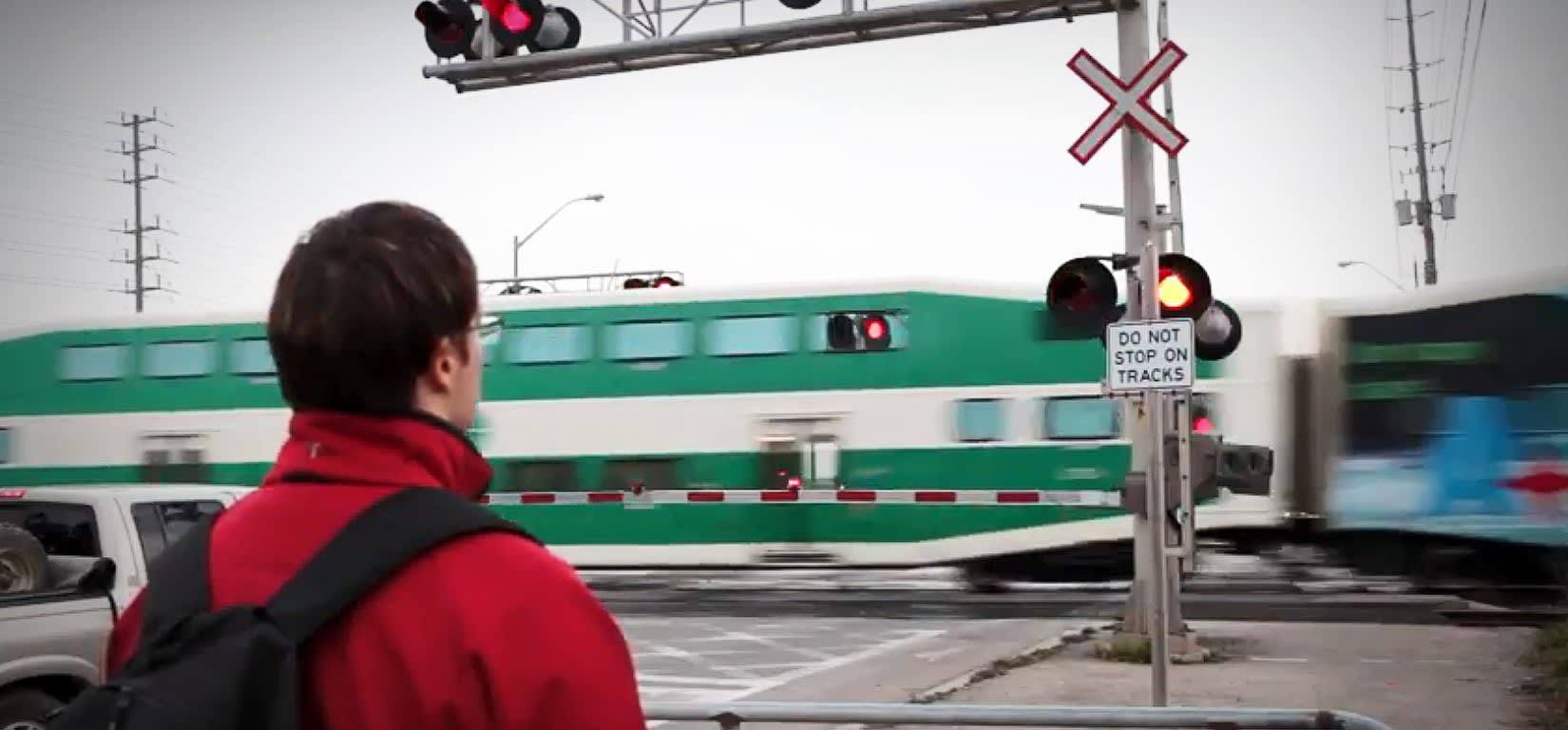Training for transit independence in Ontario
Metrolinx participates in Community Access to Transportation program for people with disabilities.
Dec 3, 2018
On a brisk autumn morning, a very bundled up Carmen Farrugia waits patiently at a bus stop in downtown Hamilton. He’s wearing a bright red jacket and is standing on the sidewalk a few feet back from the curb.
As the bus approaches, Farrugia waits for the vehicle to come to a complete stop before stepping on board and tapping his PRESTO card. He greets the bus driver with a big smile and then strategically finds a seat close to the front.
While this process likely seems routine for most people who take public transit, for Farrugia, this trip is actually the result of months of practise – and has been methodically planned out.
The 34-year-old has a developmental disability and is one of more than 440 people in Hamilton who have now been offered the Community Access to Transportation travel training course.
The municipally funded program began in 2011, and it teaches people who use developmental services how to be more independent by giving them the knowledge and confidence to use public transit safely.
After years of success with the Hamilton Street Railway (HSR), the group is now expanding their travel training services to include GO Transit, thanks to external funding from two not-for-profit agencies.
“We know that in Hamilton, we’ve had a lot of success teaching people to travel locally, and we know that people want to travel further,” said Community Access to Transportation Project Coordinator, Michelle Martin. “These are very, very important life skills that build people up.”
Michelle Martin is the transportation project coordinator with Community Access to Transportation. After years of success with the Hamilton Street Railway (HSR), the group is now expanding their travel training service to include GO Transit. Michelle Martin is the transportation project coordinator with Community Access to Transportation. After years of success with the Hamilton Street Railway (HSR), the group is now expanding their travel training service to include GO Transit
The program is unique, in that it gives people real opportunities to become more independent.
“It opens doors, because they can get from ‘A’ to ‘B’ on their own steam once they’ve learned a route,” said Martin. “They don’t have to rely on specialized door-to-door transportation.”
The Metrolinx Regional Transportation Plan says that by 2041, more than 10 million people will call the Greater Toronto Hamilton Area home. And given that GO Transit plays a critical role in connecting those communities, Jeff Short, Senior Advisor of Universal Design at Metrolinx, says it’s critical to break down as many barriers as possible to ensure everyone has equal access to transit.
“We all want or need to travel outside our community from time to time, whether it be for work, visiting friends or family, or attending an event in another city,” said Short. “And Metrolinx is very happy to partner with wonderful programs such as Community Access to Transportation so that individuals such as Carmen can learn to use GO more independently.”
The travel training process begins with eight classroom lessons, teaching skills such as: planning a route, getting to the bus stop, waiting safely (including safety with strangers), getting on the bus safely, riding the bus safely and walking safely to a destination.
The second part of the program involves spending more than 40 hours in the community with a trainer, actually riding public transit.
The GO Transit specific travel training focuses on the unique considerations of a regional public transit system. For example: given how vast the GO Transit network is, the Community Access to Transportation programs teaches people that it’s important to have a fully charged cell phone, and to carry enough money to buy a fare if they lose their PRESTO card.
“We always emphasize safety and transit training anyway, but you’re going to emphasize that much more,” said Martin, who has worked in developmental services for more than three decades. “These (skills) can be complicated to teach, but you can break them down. It just takes a little bit longer.”
Farrugia called the training “fun,” and said by taking part in the production of the GO Transit specific travel training videos, he’s actually acquired several new skills. “I learned that when I take the GO Train, I have to stand behind the yellow line,” he said.
The young man’s ultimate goal is to be able to explore more of the GTHA on his own, and he hopes that with some additional travel training, he’ll have the confidence to do that.
“To be very independent feels very good,” Farrugia said. “Toronto or Mississauga are two trips, I would like to take. I love concerts and I would love to be able to take the GO Train for a concert.”
For more information about Community Access to Transportation click here.
by Matt Llewellyn Spokesperson
